Despite the bad reputation of a couple of species, hawk moths generally go unnoticed. I get particularly excited to spot them, because there are some gorgeous species out there, both adult and larval forms. As larvae, they are known as hornworms, with many having a very pronounced horned tip at one end. Tomato gardeners fear the presence of a couple of varieties, the tomato hornworm (Manduca quinquemaculata, adult moth is the Five-Spotted Hawkmoth) and the tobacco hornworm (Manduca sexta, adult is the Carolina Sphinx), and it’s these two species that sometimes can give all hornworms a bad name. But it’s important to realize that hornworms are actually specialists, each species having their own food preferences, so most hornworms won’t care a thing about your tomatoes, and they couldn’t eat them if they tried. So turn a friendly eye toward other hornworms, because there are some very nifty ones out there!
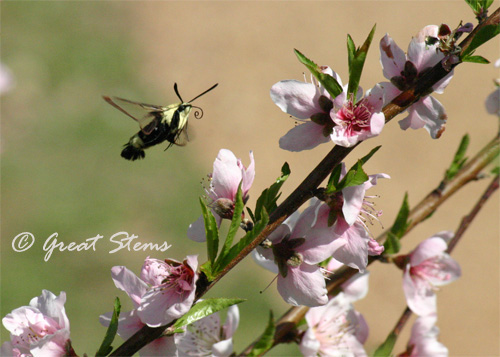
Snowberry Clearwing
If you’ve ever seen a hummingbird-like moth hovering for nectar in the daytime, you’re watching a diurnal hawkmoth. Here in my garden, I’ve seen the Snowberry Clearwing species (Hemaris diffinis). And of course, its larvae are hornworms, beautiful ones at that.
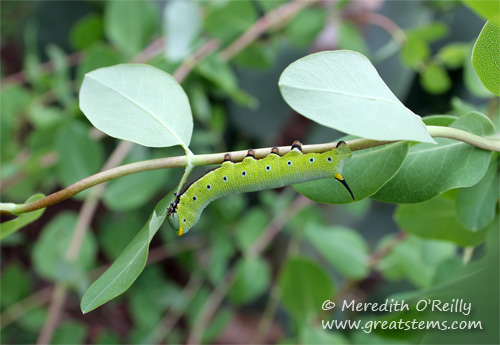
Snowberry Clearwing
This Snowberry Clearwing is munching on our native White Honeysuckle shrub, but sometimes I spot it on our Coral Honeysuckle, also native to our area. I just love the vibrant green color. Once it becomes an adult, it might return to nectar at the very same plant.
The White-Lined Sphinx moth is another beauty. While frog-watching with fellow Master Naturalists, we spotted this one collecting nectar just as it turned dark. That of course presented a bit of a photographic challenge, but thank goodness for a flash.
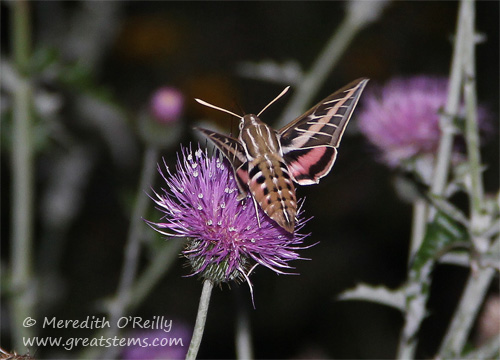
White-Lined Sphinx Moth (Hyles lineata)
On the wings, you can see the lines for which this moth earned its common name.
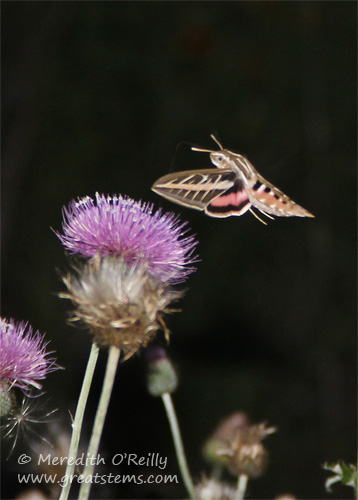
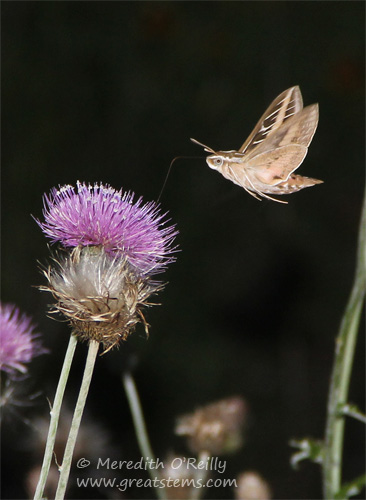
You can also see how easily these moths can be mistaken for hummingbirds, because they can hover near a bloom.
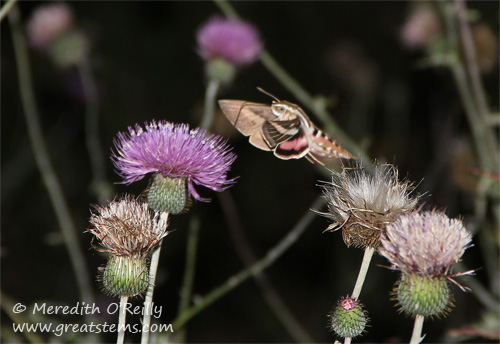
Grapes, apples, elms, Evening Primrose — these are all favorites of the White-lined Sphinx– but in full disclosure they will occasionally feed on tomatoes, too. I suppose they are more generalists than some of their cousins. But they don’t have the reputation of Tobacco and Tomato hornworms, which is why I include them here.
Down in South Austin at a Master Naturalist class, we found a White-lined Sphinx caterpillar munching on grapevine.
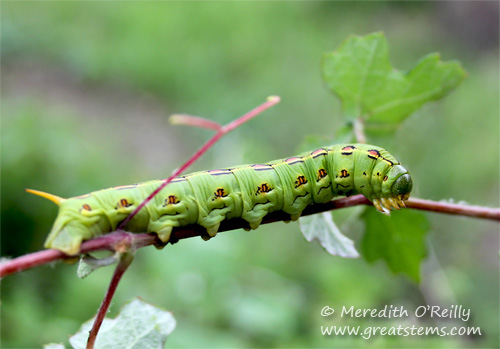
White-lined Sphinx caterpillar
Another stunning larva.
Last year at the Wildflower Center fall plant sale, a very cool horn-tipped caterpillar was spotted (pun intended, because it itself was also spotted) among a plant (was it Partridge Pea?) in the shade section. My friend Jan bought it, whatever that plant was, simply so we could learn more about the caterpillar. Since I was raising caterpillars in my little caterpillar hotel, I took care of the caterpillar and plant until the caterpillar went to pupa stage, and the pupa overwintered in the backyard hotel. Unfortunately, I didn’t have a chance to take a picture of the caterpillar before it went to cocoon, but I knew that at some point I’d at least see the adult, with luck.
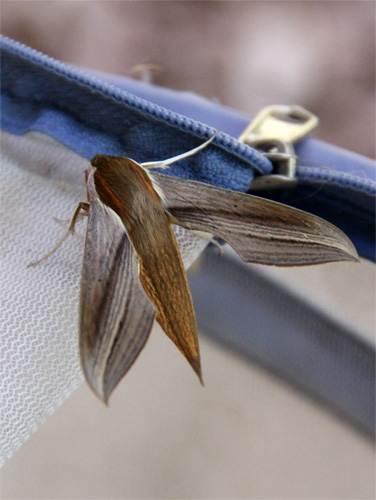
Tersa Sphinx Moth
Sure enough, this past spring, a beautiful moth emerged in the mesh tent, and before I released it, I took a picture. Tersa Sphinxes, by the way, like Pentas, Catalpas, coffee, and other such plants.
The horn tip is a pretty big clue as to what kind of caterpillar you might be looking at — the plant species it is eating is another. Remember, each species has its own food preferences. Do you have any other hornworm favorites?
And I can’t help but point out that though a tomato-eating hornworm is perhaps doomed if you find it in your garden, it’s still a beautiful caterpillar.
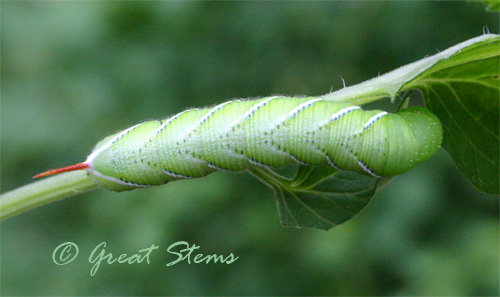
Tomato Hornworm, Manduca sexta
Stunning photos of the hummingbird moth. The others are nice, too, but wow! Also, I’ve tagged you in my 7/18/12 post. Check out how to play the blogging tag game at http://www.thesquirrelnutwork.com
Nutmeg Squirrel, thanks, I’m glad you liked the photos. Thanks for including me in the blog tag game. I usually don’t participate in those, but I do appreciate you thinking of me.
Greetings:
Great website and photos! I am going to be offering a gardening program later this month and wanted to teach folks the difference between tomato hornworms and the white lined sphinx moth caterpillars. I’m really hoping to convince folks not to squish the caterpillars when they find them in their gardens and I feel that showing them the beautiful moths they turn into may be what it takes to win them over. If I credit your photos of the caterpillars, would you mind if I used them in a powerpoint presentation?
I appreciate your consideration!
Jen
Thanks for checking with me, Jen. I would be okay with that with photo credit. Good luck!